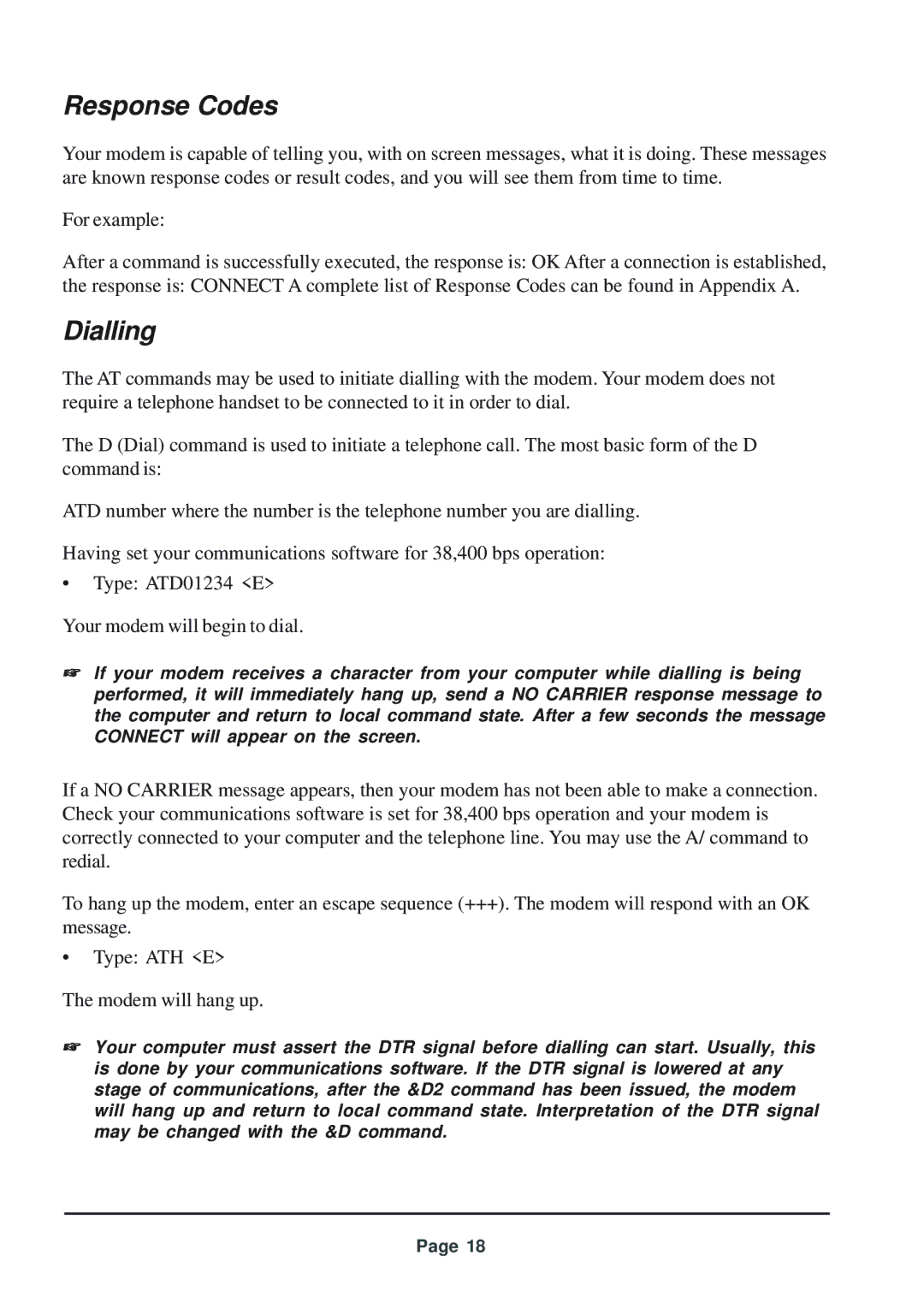Response Codes
Your modem is capable of telling you, with on screen messages, what it is doing. These messages are known response codes or result codes, and you will see them from time to time.
For example:
After a command is successfully executed, the response is: OK After a connection is established,
the response is: CONNECT A complete list of Response Codes can be found in Appendix A.
Dialling
The AT commands may be used to initiate dialling with the modem. Your modem does not require a telephone handset to be connected to it in order to dial.
The D (Dial) command is used to initiate a telephone call. The most basic form of the D command is:
ATD number where the number is the telephone number you are dialling.
Having set your communications software for 38,400 bps operation:
•Type: ATD01234 <E> Your modem will begin to dial.
☞If your modem receives a character from your computer while dialling is being performed, it will immediately hang up, send a NO CARRIER response message to the computer and return to local command state. After a few seconds the message CONNECT will appear on the screen.
If a NO CARRIER message appears, then your modem has not been able to make a connection. Check your communications software is set for 38,400 bps operation and your modem is correctly connected to your computer and the telephone line. You may use the A/ command to redial.
To hang up the modem, enter an escape sequence (+++). The modem will respond with an OK message.
•Type: ATH <E> The modem will hang up.
☞Your computer must assert the DTR signal before dialling can start. Usually, this is done by your communications software. If the DTR signal is lowered at any stage of communications, after the &D2 command has been issued, the modem will hang up and return to local command state. Interpretation of the DTR signal may be changed with the &D command.
Page 18
